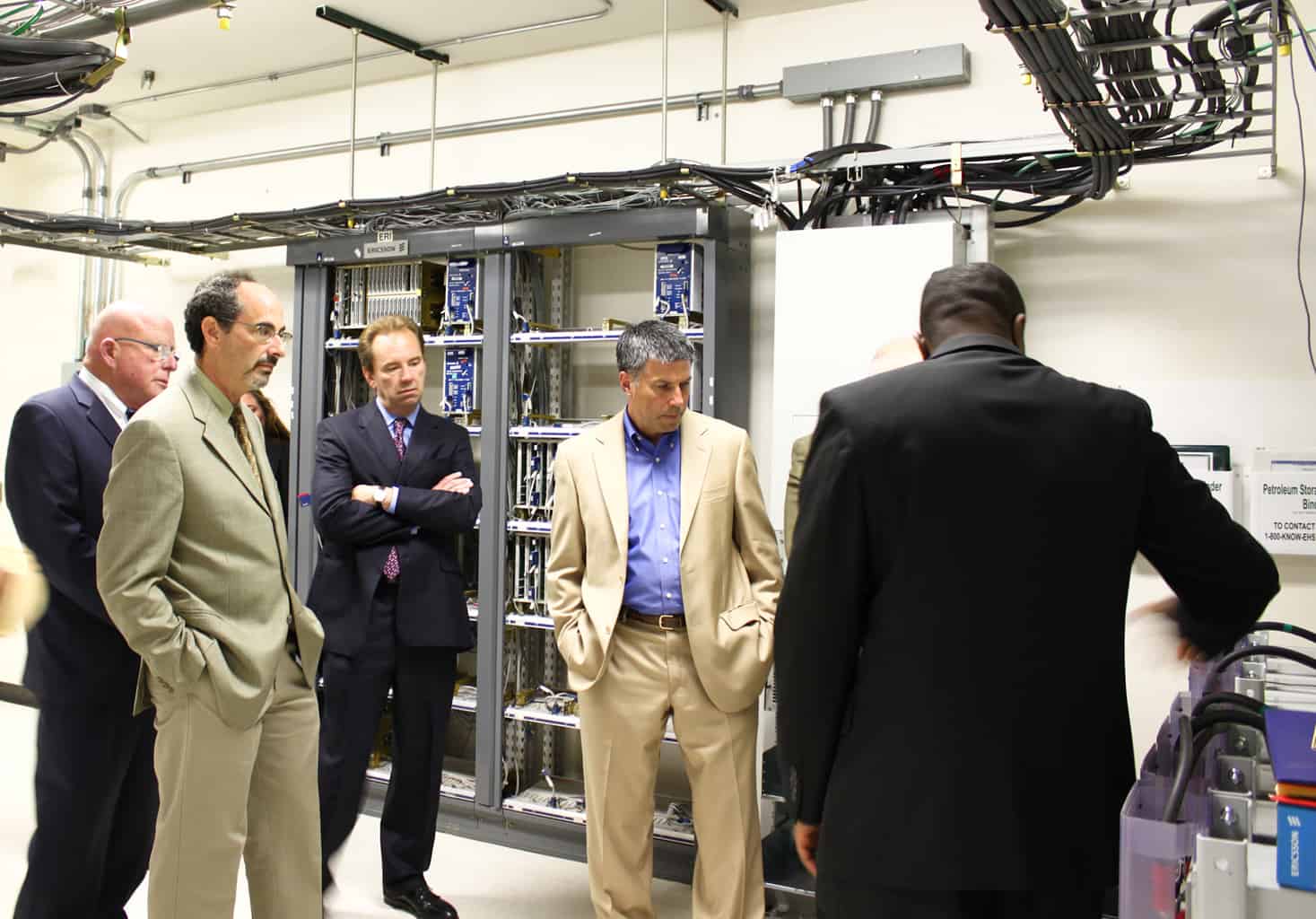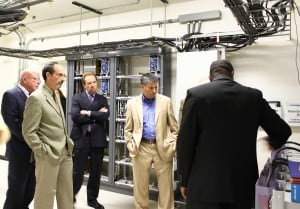

AT&T announced recent network upgrades in the Culver City area and unveiled its plans on network enhancements including a recently upgraded cell site near the intersection of Sepulveda Boulevard and Culver Boulevard. It is a “high-capacity site” that AT&T claims will provide customers in the area better coverage inside buildings and a higher level of call quality. The cell site is one of 10 cell sites in the Culver City area that have been recently upgraded with additional capacity. While there is still local concern about cell phone towers, the need for service is constant, and demands continue to grow.
“AT&T’s continued commitment and investment into our communications infrastructure is an immense benefit to Culver City businesses,” said Steve Rose, President of the Culver City Chamber of Commerce. “The network upgrades will make a positive impact in our day-to-day activities as we conduct business and communicate with our family and friends.”
“We are investing in our Culver City network to help AT&T customers conduct business faster and more efficiently as well as to take advantage of the numerous capabilities of their smartphones and tablets,” said Angela Gibson, director of AT&T external affairs department and current Chair of the Board of the Culver City Chamber. “We are committed to providing our customers excellent service to meet their daily needs, and we are backing that up with the right network enhancements.”
While the controversy over adding a cell tower to a site on Sawtelle near Overland stirred up one Culver City neighborhood last year, the fear of radiation from towers may obscure the empirical evidence.
Robert Shoreline of Radio and Wireless offered the observation that “There is a lot of paranoia surrounding cell towers and possible human health risks. What is important to understand is that radio frequency field intensity is related to the inverse of the distance squared. The exposure that you get from being in the vicinity of a cell tower is hundreds of times lower than the exposure you get using a cell phone.”
Citing the physical aspect of the electronics we all use every day, Shoreline added “The very latest generation [of cell phones] operating at 1.8 GHz uses a maximum power of 100 milliwatts and will step down to as little as 1 milliwatt if the signal level is good. This is not enough to cause significant thermal heating and is safe. The field strength we are subject to from cell towers is a small percentage of the field strength you are subject to using these phones. They represent no threat.”
A study published in British Medical Journal specific to the risk of cell phone towers and childhood cancers can be accessed here by clicking bmj for those craving more clinical information.
Shoreline emphasized, “For cell phone users, more towers reduces your exposure because your cell phone steps down it’s power when the signal is strong. If you’re a few hundred yards from a cell tower, that cell tower doesn’t require that your phone transmit at a high power level for it to receive it. If you are several miles, then your phone must transmit at a higher, but still safe, power level.”


Thank you for doing the research regarding the fears of health risks about cell phone towers. It’s great to have a voice of reason up-front on this issue.
There is a great book called ANTI CANCER A NEW WAY OF LIFE by David Servan-Schreiber. It is written for everyone (not just people with cancer) as it talks about ways to help stay cancer free. There is a section on cell phone usage and he has a list of precautionary measures. Here is his list:
1. Except in rare cases, don’t let children under twelve use cell phones. Growing organs, in children and in fetuses, are the most sensitive to the effects of electromagnetic fields.
2. During phone calls, try to stay as far away as possible from the phone itself. At a distance of four inches (ten centimeters), the amplitude of the electromagnetic field is four times weaker; it is fifty times weaker three feet (1 meter) away. As often as you can, use the “speaker” function, a regular headset, or even a Bluetooth headset, which will reduce the electromagnetic emissions of your cell phone by a factor of a hundred.
3. Keep away from people who are using their cell phones and avoid using yours in the subway, train, or bus: You’ll be exposing your fellow travelers to the magnetic field of your phone..
4. Avoid keeping a cell phone constantly on your person, even if it is on standby. Do not keep it close to you at night (for example, under the pillow or on your nightstand), especially if you are pregnant. You can choose the “airplane” or “offline” mode, which stops electromagnetic emissions.
5. Restrict cell phone calls to short calls. The biological effects are directly linked to duration of use. And it’s better to call back from a corded land telephone: Cordless phones use microwave technology that is similar to that of cell phones and were recently incriminated in a Swedish study as possibly increasing cancer risk as well.
6. When you use your phone, regularly change the ear that you use. And before you put the phone to your ear, wait for the other person to pick up the call: The electromagnetic field will become less powerful.
7. Avoid using your phone when the signal is weak or during rapid travel, as in a train or a car. Because the phone is constantly searching to connect with a transmissions antenna, its power output will be at maximum.
8. Use text messages rather than calls. This will limit the duration of exposure and reduce proximity with the body.
9. Choose a phone with the lowest possible SAR (The “specific absorption rate” measures the level of radio frequencies emitted by the cell phone to the user.) Lists of the SAR levels of various brands of phones are available on a number of Web sites.
Definitely “food for thought”!
Too bad our previous school board did not see the value of placing a cell tower that would have provided income to CCUSD. The alternative was to place the cell tower outside of CCUSD.
ATT really needs to work on upgrading what their service can handle, but I’m not sure if this makes much sense in this situation.
I understand not wanting anyone to get cancer, but as stated in the article, the evidence seems to show otherwise. Therefore it’s a good move to help improve their service.